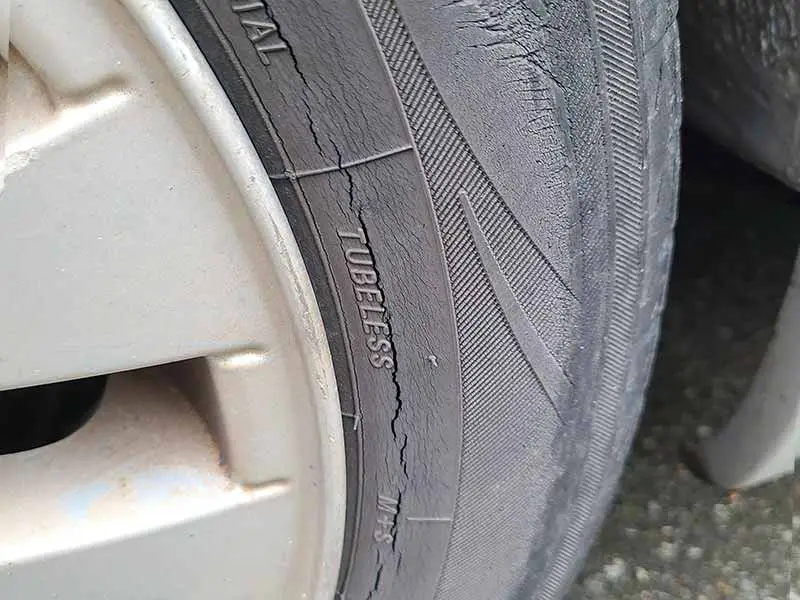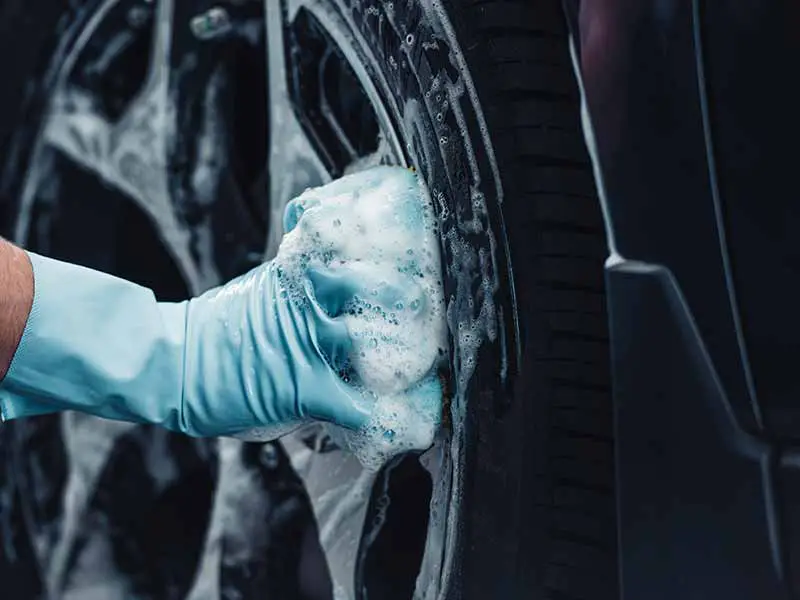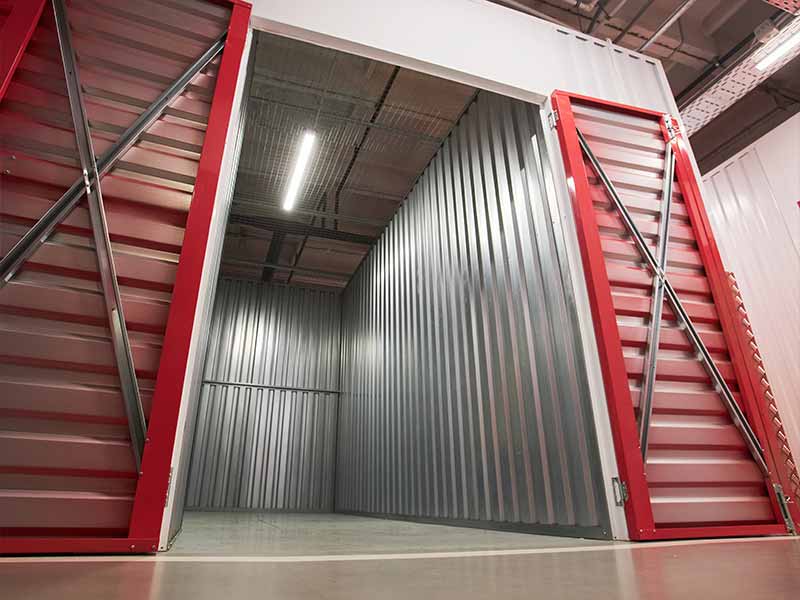Storing your tires might seem like just another chore as you swap out seasonal gear. But did you know it’s a critical step that can extend the life of your tires, improve your vehicle’s safety, and even save you money? If you’re pondering whether to stack those spare tires in a corner or invest in a proper storage unit, this article is for you. Let’s dive into the world of tire storage and uncover the best practices to keep your tires in peak condition.
Can You Store Tires In A Storage Unit?
Yes, you can store tires in a storage unit, but several factors like temperature, humidity, and positioning need to be considered to ensure the tires maintain their integrity and performance.
In this article, we’ll explore the nitty-gritty of tire storage, from why it’s important to the specific conditions that keep your tires ready for the road. We’ll guide you through selecting the right storage unit, preparing your tires for storage, and knowing when it’s time to bring them out again.

Why Proper Tire Storage Matters
When it comes to taking care of your vehicle, every detail counts — and that includes how you store your tires. You might not think much about where your tires sit when they’re not rolling on the road, but the truth is, proper storage can significantly extend their life and ensure your safety. Here’s why it matters:
- Preserving Tire Integrity: Tires are engineered marvels, designed to grip the road and handle loads. But when they’re not stored correctly, they can degrade faster than you might expect. Poor storage conditions can lead to dry rot, cracking, and even structural failures that aren’t just costly – they’re downright dangerous.
- Maintaining Performance: Ever noticed how your car rides smoother on fresh tires? That’s because tires are optimized for performance. If they’re stored improperly, they can develop flat spots or lose their shape, leading to a bumpy ride or worse, a loss of control.
- Cost Efficiency: Let’s face it, tires are an investment. By storing them properly, you’re protecting that investment. Tires that are well-maintained will serve you longer, meaning you won’t have to replace them as often.
The Safety Implications of Poorly Stored Tires
It’s not just about longevity or performance; it’s about safety too. Tires with degraded rubber or structural issues can lead to accidents. Imagine a tire blowout at high speeds, all because a tire wasn’t stored in the right conditions — it’s a risk that’s not worth taking.

Tire Covers
Factors to Consider When Storing Tires
When you’re tucking your tires away for a season or just for a short period, several environmental and physical factors come into play. Understanding these can make all the difference in keeping your tires in top-notch condition:
Temperature
- Ideal Range: Tires love stability, and when it comes to temperature, they prefer a cool, consistent environment. Ideally, you want to store your tires in a place that stays between 50°F and 80°F. Extreme temperatures, whether hot or cold, can accelerate the aging process of the rubber compounds in your tires.
Humidity
- Dry But Not Too Dry: Humidity can be a tire’s foe. High humidity can lead to condensation and eventually, to the corrosion of the metal components within the tire, such as steel belts. Conversely, an environment that’s too dry might cause the rubber to crack. Striking a balance is key; a moderately dry environment is what you should aim for.
Sunlight and UV Exposure
- Avoid Direct Sunlight: Just like with our skin, UV rays can be harmful to tires. Continuous exposure to sunlight can lead to UV degradation, making the tire’s surface brittle and prone to cracks. Always store your tires away from direct sunlight.
Positioning
- How to Stack ‘Em: The way you position your tires in storage matters. If they’re off the rims, store them upright and rotate them periodically to distribute weight evenly. If they’re on the rims, you can stack them, but don’t make the stack too high, or you risk deforming the bottom tire.
Cleanliness
- Start Clean: Before you store your tires, give them a good wash to remove dirt, grease, and brake dust. These substances can contain chemicals or materials that may degrade the rubber over time. Once clean, ensure they’re dry before storage to prevent mildew or rust.
Choosing the Right Storage Unit
Once you’ve got the know-how on the environmental factors, selecting the right storage unit becomes crucial. Here are key features to look for:
- Size Matters: Ensure the unit is spacious enough to store your tires without having to stack them too high or cram them in.
- Climate Control: This feature is a game-changer. A climate-controlled unit keeps the temperature and humidity levels stable, offering the ideal environment for tire storage.
- Security: Last but not least, ensure your storage unit is secure. You’re storing an investment, and it should be protected as such.

Preparing Tires for Storage
Storing your tires isn’t as simple as tossing them into a shed or garage. Proper preparation is crucial to ensure they stay in good shape while they’re off your vehicle. Here are the steps to make sure your tires are ready for their hibernation:
1. Cleaning
- Remove Debris and Dirt: Use a tire brush and soapy water to thoroughly clean each tire. Remove all traces of dirt, grime, and brake dust, as these can cause the rubber to deteriorate over time.
- Dry Completely: After washing, ensure the tires are completely dry before storing them. Any residual moisture can lead to mildew or rust, especially on the metal parts of the tire.
2. Inspecting
- Check for Damage: Before you store your tires, inspect them for any signs of damage, such as cuts, punctures, or bulges. If you find any, it might be time to repair or replace the tire.
- Evaluate Tread Wear: Make sure the tread is still within safe limits. Severely worn tires might not be worth storing and instead should be recycled or disposed of properly.
3. Bagging
- Use Airtight Bags: Once clean and dry, place each tire in an airtight bag to reduce the exposure to oxygen and ozone. Vacuuming out the air from the bag with a vacuum cleaner before sealing it can further protect the tire.
4. Positioning
- Stack or Stand: If your tires are on rims, you can stack them horizontally. If they are off the rims, it’s better to store them upright and rotate them occasionally to prevent flat spots.
- Avoid Weight and Stress: Don’t store heavy items on top of or against the tires. Excessive weight or pressure for an extended period can deform the tires.
Monitoring and Maintenance
Even while in storage, your tires need a little attention:
- Regular Checks: Periodically inspect your tires for any changes or signs of damage.
- Rotate and Reinspect: If stored for an extended period, rotate the position of the tires to prevent flat spots or uneven aging.
Resources
While I’m unable to browse for specific links at the moment, here are some general recommendations for reputable websites that often provide valuable information on tire storage and automotive care:
Final Thoughts
By understanding and implementing the right storage conditions, you can significantly extend the life of your tires, maintain their performance, and ensure your safety on the road.
Whether it’s considering the temperature, humidity, or how to position your tires, each factor plays a crucial role in preserving your tires’ integrity.
Good luck and happy motoring.





